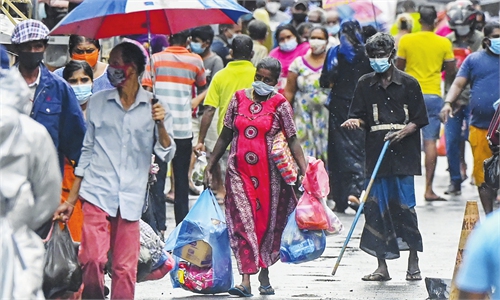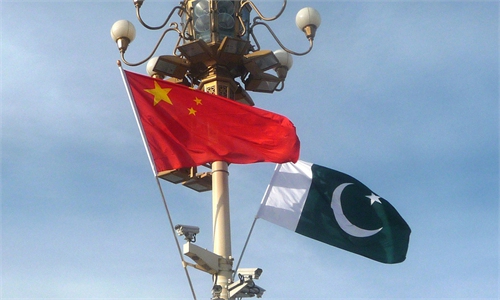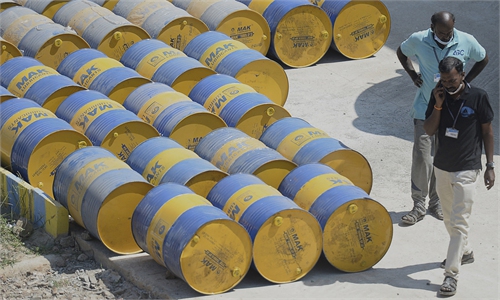
Illustration: Tang Tengfei/Global Times
The World Bank on Wednesday lowered its economic forecast for India, as well as the whole South Asian region which is currently seeing some regional countries encountering political tremor and intensifying economic woes.To promote regional economic growth, concerted efforts from China, India and all other countries in the region are needed.
In its twice-a-year regional economy update, the World Bank cut India's GDP forecast in its fiscal year 2022-23 to 8 percent from 8.7 percent, and revised down that of the whole region, excluding Afghanistan, by one percentage point to 6.6 percent in 2022, according to a statement released by the international lender.
For a period of time, some regional countries, including Sri Lanka, Pakistan and Nepal, have faced significant economic headwinds partially caused by the COVID-19 pandemic. The difficulties seem to have aggravated after the outbreak of the Ukraine crisis, which further dampened the external environment and the prospects for a rapid recovery.
For instance, Pakistani economy is facing the headwinds of high inflation, high unemployment and currency devaluation, which has become one of the hard challenges facing the country's newly elected Prime Minister Shehbaz Sharif.
Sri Lanka said on Tuesday that it would temporarily default on all foreign debt until it had come to an agreement with the creditors on how to restructure its loans, as it tries to preserve its dwindling foreign exchange reserve to import essential food and fuel.
And, Nepalese official data showed that its inflation rate in the first eight months of its fiscal year 2021-22 surged to 7.14 percent, hitting a 67-month high. Also, the country's trading deficit has grown rapidly as its foreign reserve keeps declining.
The difficulties facing the countries are expected to generate spillover effects into neighboring economies and may destabilize the recovery of the South Asian Sub-Continent from the pandemic. However, the situation there has been used by some ill-intended anti-China forces from the West who attempt to drive a wedge between the South Asian countries and China.
Once again, the clichéd "debt trap" stories were brought up regardless of the real reasons behind these countries' economic challenges. Some Western media outlets have started to point fingers at China and taking the chance to vilify China-proposed Belt and Road Initiative (BRI), claiming it is Chinese loans that pull them into the crisis.
Indeed, all the three South Asian countries have been cooperating with China under the BRI framework; however, none of them have fallen into a so-called "debt trap" made by China, and accusations that China is reluctant to bail them out are sheer nonsenses.
For instance, Chinese loans account for only 10 percent of Sri Lanka's total debt, much lower than the 47-percent held by other creditors in the world. Among the country's borrowed loans, Chinese lending is much lower than that of Japan and also lower than that of India.
Contrary to the "debt trap" accusations, BRI cooperation has been delivering benefits to local economies. By the end of 2021, over 30 enterprises from Sri Lanka, the UK, Singapore and others had settled in the Hambantota port which is jointly operated by China and Sri Lanka. Not to mention the BRI flagship project China-Pakistan Economic Corridor, which, based on high-level mutual trust, is bringing growing benefits to Pakistan.
In fact, behind the current difficult state of the above-mentioned South Asian economies, there are multiple factors, including incomplete domestic supply chains, relatively weak economic basis, and unbalance industrial development. And they are not alone in the world. The debt burdens of many developing countries are now at their highest level in 30 years, according to statistics from IMF.
It is obvious that India, as the largest South Asian economy, cannot spare itself from the bleak regional environment. Only by facilitating other economies in the region out of their hardships as soon as possible will help stabilize and promote the economic recovery of South Asia, including India. And, it calls for joints effort from China, India and all regional countries.
The author is an editor with the Global Times. bizopinion@globaltimes.com.cn



